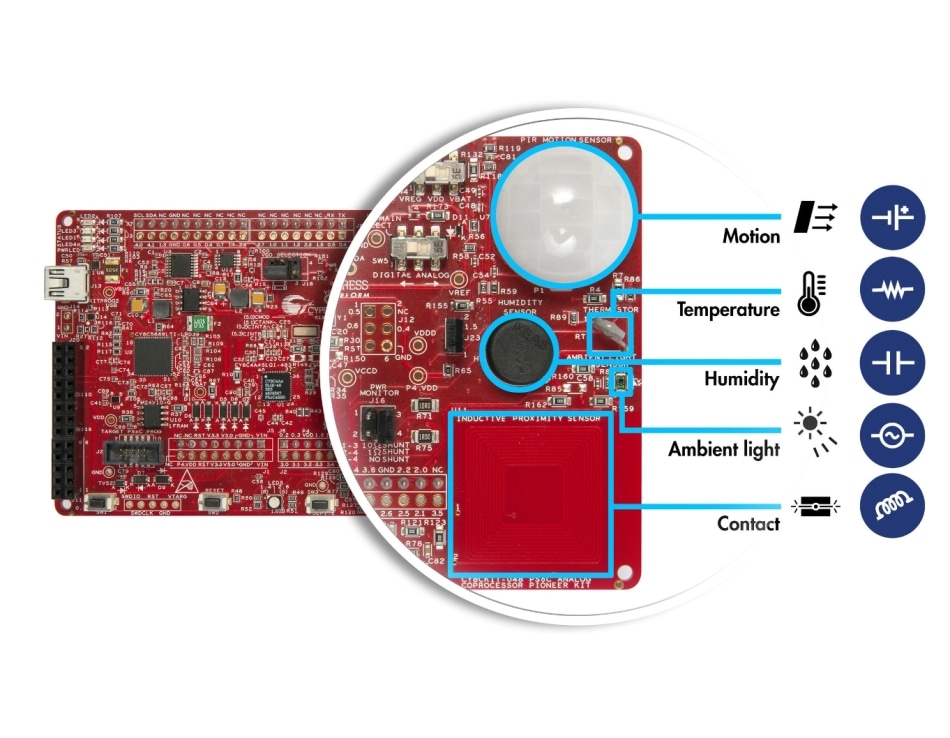Oct 3 2016
Cypress Semiconductor Corp. and Hackster today announced a global design competition that gives engineers the opportunity to prototype their innovative ideas that sense the world around us for use in the growing Internet of Things (IoT) market, home appliances, and consumer and industrial applications. The Sensing the World Challenge will use Cypress’s easy-to-use CY8CKIT-048 PSoC® Analog Coprocessor Pioneer Kit as the development hardware platform. Hackster will select a winner from three regions—the Americas, Asia Pacific and Australia, and Europe and Africa—and each will receive an Oculus Rift virtual reality headset and development kit. Designers can sign up and find more information at www.hackster.io/contests/cypress-sensing-the-world-contest.
 Pictured is Cypress's PSoC Analog Coprocessor Pioneer Kit (CY8CKIT-048), which simplifies evaluation of the PSoC Analog Coprocessor. Cypress and Hackster are sponsoring the Sensing the World design contest, which will use the kit as the development hardware platform. The kit is available for $49 and includes a PIR motion sensor, a humidity sensor, a thermistor, an inductive proximity sensor and an ambient light sensor. Credit: PRNewsFoto/Cypress Semiconductor Corp.
Pictured is Cypress's PSoC Analog Coprocessor Pioneer Kit (CY8CKIT-048), which simplifies evaluation of the PSoC Analog Coprocessor. Cypress and Hackster are sponsoring the Sensing the World design contest, which will use the kit as the development hardware platform. The kit is available for $49 and includes a PIR motion sensor, a humidity sensor, a thermistor, an inductive proximity sensor and an ambient light sensor. Credit: PRNewsFoto/Cypress Semiconductor Corp.
“People generally associate the IoT with connectivity, but most next-gen applications start with the ability to sense real-world conditions,” said Adam Benzion, co-founder and CEO of Hackster. “This new design challenge unleashes the imaginations of the worldwide Hackster community. Thanks to the Cypress PSoC Analog Coprocessor, they can develop a huge range of innovative applications with its mix of sensor input combinations.”
“I can’t wait to see what the creative minds of the Hackster community will develop with the rich, flexible analog resources they have to work with in this design contest,” said John Weil, vice president of MCU marketing at Cypress. “The PSoC Analog Coprocessor allows engineers to simply create cost-effective systems with precise, highly sensitive analog sensors. And our intuitive PSoC Creator™ integrated design environment enables rapid prototyping and design iterations with hardware and software flexibility.”
Initial proposals for the Sensing the World Challenge will be accepted through 11:55 p.m. Pacific Time on October 30, 2016, and 100 entries will be selected to receive the PSoC Analog Coprocessor Pioneer Kit to create a prototype of their idea. Projects will be due by 11:55 p.m. Pacific Time on January 8, 2017 and the regional winners will be announced on January 18.
Introduction to PSoC Analog Coprocessor
This video introduces Cypress's PSoC Analog Coprocessor, which simplifies the design of sensor-based systems. The solution provides a scalable and reconfigurable architecture that integrates programmable analog front ends (AFEs) and a signal processing engine (32-bit ARM Cortex-M0+) that can calibrate and tune the AFE in software.
Cypress will be demonstrating its PSoC portfolio, including the PSoC Analog Coprocessor, at World Maker Faire from October 1-2, 2016 at the New York Hall of Science in booth number 3206 in Zone 3.
The PSoC Analog Coprocessor integrates efficient and powerful signal processing with an ARM® Cortex® M0+ core and programmable analog blocks, including a new Universal Analog Block (UAB) that can be configured with GUI-based software components. This combination simplifies the design of custom analog front ends for multiple sensor interfaces by allowing engineers to update sensor features quickly with no hardware or host processor software changes, while also reducing BOM costs. For example, in home automation applications, engineers can easily configure the device to continuously monitor multiple sensors, such as temperature, humidity, ambient light, motion and sound, allowing the host to stay in a standby low-power mode. Future design changes to support new sensor types can also be easily implemented by reconfiguring the programmable analog blocks. More information on the PSoC Analog Coprocessor is available at www.cypress.com/PSoCAnalog.
The design of custom sensor interfaces is enabled by Cypress’s free PSoC Creator™ Integrated Design Environment (IDE), which simplifies system design by enabling concurrent hardware and firmware development using PSoC Components—free embedded ICs represented by an icon in the IDE. Engineers can easily configure the programmable analog blocks in the PSoC Analog Coprocessor by dragging and dropping components on the PSoC Creator schematic and customizing them with graphical component configuration tools. The components offer fully engineered embedded initialization, calibration and temperature correction algorithms.
About Hackster
Hackster Powers the Hardware Community. We started in 2013 with a commitment to help people everywhere learn how to program, connect and create Internet-connected hardware. Our community has surpassed 100,000 developers, makers and entrepreneurs who build projects as means for learning and discovery. Learn more about us at Hackster.io.